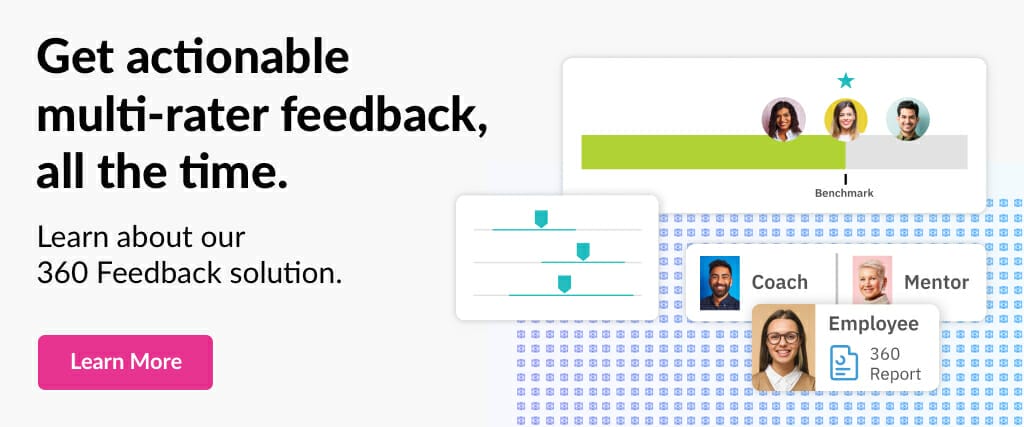360 Degree Feedback: One Solution to Keep Employees Engaged

A recent survey by Globoforce and the Society for Human Resource Management (SHRM) reveals that 45% of HR leaders don’t think annual performance reviews are an accurate appraisal for employees’ work, and 42% don’t think employees are rewarded fairly for their job performance.
The same survey also points out that employee engagement remains the primary issue facing companies today. According to the survey, 94% of respondents said employee engagement is an important or very important workforce challenge they currently face. Of these, 63% rate it as very important.
These stats only highlight the point of our last blog, “How To Keep Top Employees Engaged–and From Leaving.” Employee engagement is absolutely important and is one of the key factors in keeping your employees from being poached. But, employee engagement is only part of the bigger picture–a strong performance management strategy is where everything should begin.
Companies still struggle for solutions when it comes to performance management
There are many aspects of performance management that help with the issues above. But I’d like to dive into why 360 degree feedback can help with employee engagement. Lack of ongoing feedback from multiple sources was often cited as one of the biggest challenges with the current annual approach to reviews in the survey. 360 degree feedback, or multi-rater feedback, as discussed in this post refers to the direct feedback from an employee’s subordinates, peers, and supervisor(s), as well as a self-evaluation. It also includes feedback from external sources (customers, suppliers, or vendors the employee works with).
The value of 360 degree feedback surveys
360 degree feedback surveys provide insight about employees’ skills and behaviors and helps them understand their strengths, weaknesses, and developmental areas based on others’ feedback. If used properly, employees and managers will use this information to build a plan for competency development with specific learning resources. These plans and strategies enable employees to feel like active participants in their career growth and professional development. In return, this keeps the employee engaged since they know what steps they need to take and what skills they need to gain to advance in the organization.
Common traps of 360 degree reviews
There are common mistakes and essential practices to be aware of with 360 degree feedback surveys. It’s important to keep in mind that:
- Dangers exist if you’re using generic rather than role specific competencies
- There are pros and cons to using unmoderated vs. moderated reviews
- Challenges can be encountered by not mapping learning resources to competencies
- Best practices exist to maximize development based on the review
- There are multiple ways to engage employees and managers in on-going feedback
When done correctly, 360 degree feedback surveys can be amazing tools that not only help with performance management, but also employee engagement.
Linking Cascading Goals to Employee Performance Management and Development Planning Improves Engagement
Linking Cascading Goals to Employee Performance Management and Development Planning Improves Engagement An employees performance appraisal is often conducted without regard to corporate business needs and goals. Unclear goals and misalignment of enterprise efforts can limit both organizational and individual performance, resulting in reduced engagement levels. Seldom do organizations cascade goals from the corporate office […]


